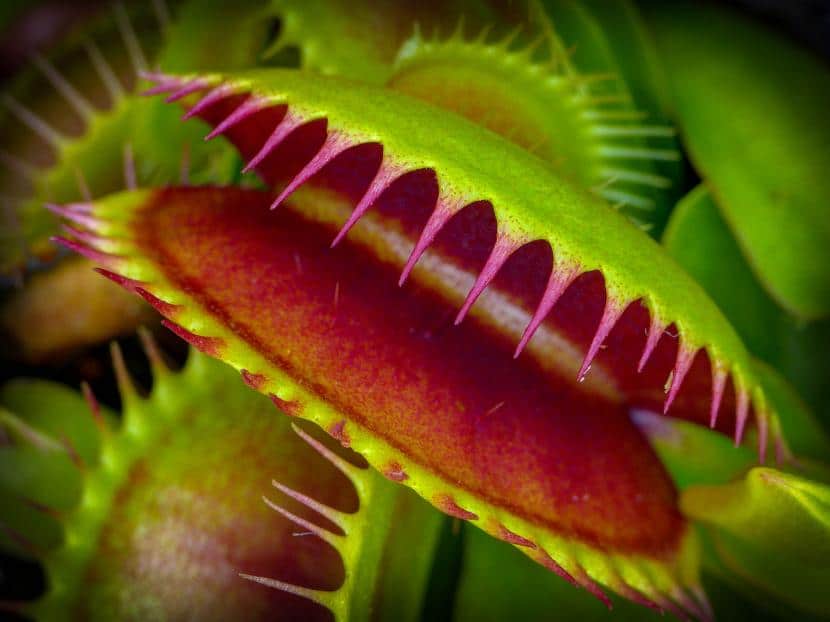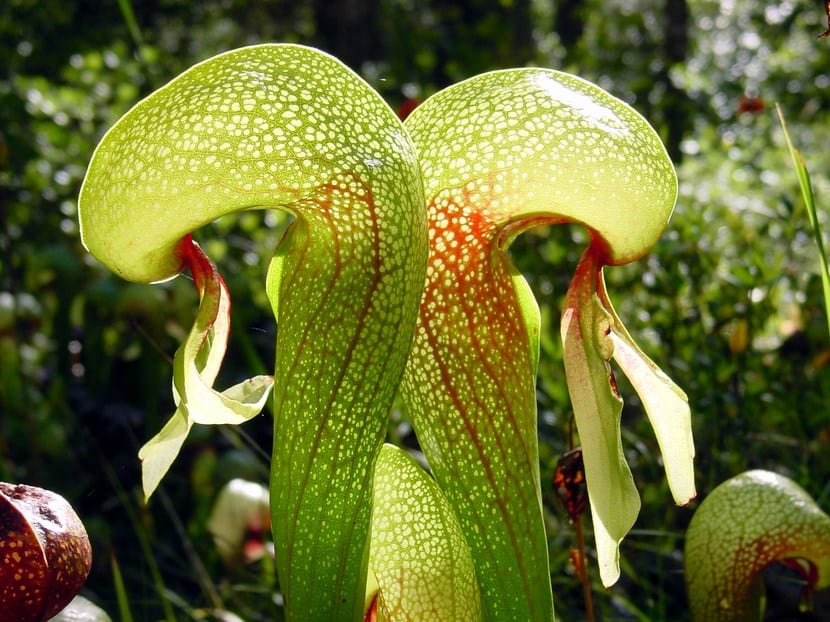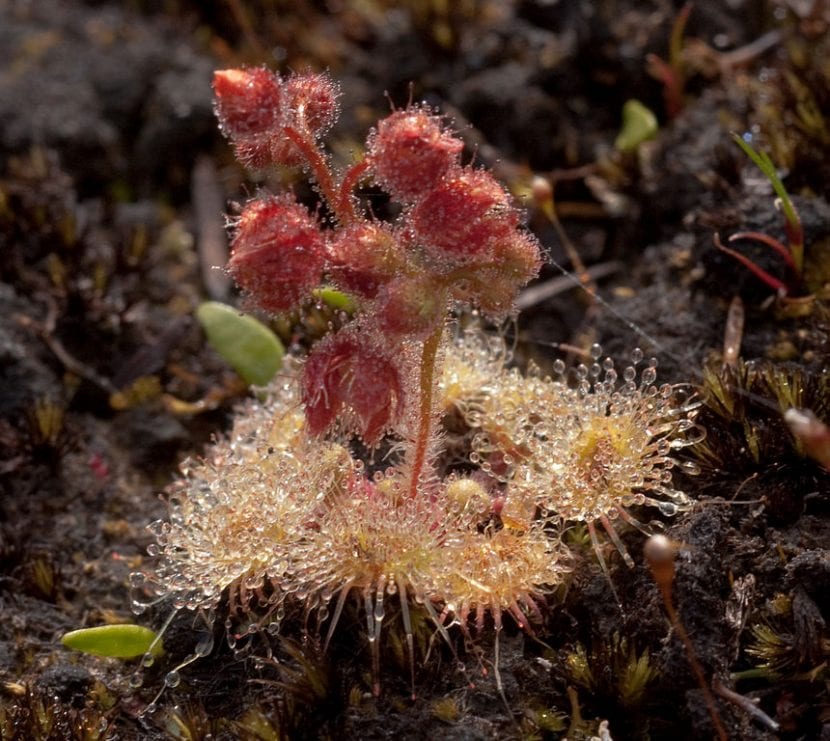
Dionaea muscipula
We know that there are trees, palms, conifers, and so on. All of them can become very decorative, having flowers and / or a very unique bearing, but they do not have what carnivorous plants do: traps, more or less perfected, of different shapes and colors that trap insects.
They are so curious, that it is not surprising that more and more people are collecting them. But, Do we know what exactly carnivorous plants are? Let's find out 🙂.
What are carnivorous plants?

sarracenia purpurea
Our protagonists, also called insectivorous plants, find so few nutrients in the soils where they live, as in the acidic swamps of North America, that they must feed on animals, usually insects and protozoa.
There are around 630 species that produce digestive enzymes or bacteria that help plants absorb nutrients from their prey; but in addition, there are more than 300 species of protocarnivorous plants in various genera that show some characteristics of carnivores.
How many types are there?
Depending on the type of trap they have, 6 types are distinguished:
Sticky hair traps

Sundew rotundifolia
The carnivores of the genus Drosera, Byblis, Drosophyllum and Pinguicula they grow forming rosettes at ground level, at the tip of which we find a transparent viscous fluid. When an insect falls or perches on the leaf, the leaf closes slowly - it can take several hours to close completely - as the prey moves trying to escape, something that you will not be able to do when you have stuck to it.
Mouth-shaped traps

Dionaea muscipula
The carnivores of the genus Dionaea and Aldrovanda are some of the most popular, especially the former. They have trap leaves on the edges of which are pincers or teeth. The insect is attracted to a sweetish tasting nectar, so when it lands on the leaf and grazes at least two of the detector cilia (the shortest hairs found inside the trap) in a maximum of five seconds, it closes automatically.
Pitcher traps

darlingtonia californica
Often also called wineskin plants, they are one of the most surprising. The genera Nepenthes, Sarracenia, Darlingtonia, Cephalotus, Heliamphora and Brocchinia have vase-shaped traps in which they have a watery liquid. At the edges of the trap there is nectar, which is what attracts insects. However, it is very slippery so in most cases it falls inside and drowns.
Y-shaped traps to catch protozoa

Genlisea filiformis
Genlisea are carnivores that hunt protozoa to survive, which they attract chemically. A Y-shaped blade allows prey to enter, but not exit. And not only that, but the trap has inward-pointing hairs that force the prey to move in a certain way. Thus, it enters a spiral where it will end up falling into the stomach located in the upper arm of the Y, where it will finally be digested.
Tiny self-closing traps

Utricularia minor
These traps are the most curious of the carnivorous ones, and only the Utricularia have them, which are aquatic plants whose traps look like tiny balloons. Normally, they usually have them closed, but if a prey gets too close and brushes bristles that are stuck in the traps, they open, absorb the water and trap the animal. Right after, the traps close automatically.
Trap combination

Sundew glanduligera
There is a kind of carnivorous plant, the Sundew glanduligera, which has traps with characteristics of those that have the shape of a mouth, and those that have sticky hairs.
How are they cared for?

Nepenthes »Bloody Mary»
As they have very different characteristics from other plants, their care is special. Therefore, if you dare to have some, below we offer you a general guide of the care that we must provide them:
- Location: most of the species grow best in semi-shade, but if you want to have a Sarracenia I recommend that you grow them in full sun so that their traps acquire those beautiful colors.
- Substratum: it must have a low pH (between 4 and 6) and facilitate water drainage. You can use peat moss mixed with perlite in equal parts, or coconut fiber.
- Irrigation: frequent, especially in summer. You should use distilled or rain water and water with it every time the substrate dries up. In general, you have to water every 2 days in summer and every 3-4 days the rest of the year.
- Transplant: depending on the species, it may be necessary to transplant every year, as in the case of the Sarracenia for example. The best time to do it is in spring, when temperatures stay above 15ºC.
- Pruning: to avoid problems, it is convenient to remove the dry leaves as well as the withered flower stems.
- Rusticity: depends on the species. Most carnivorous plants cannot bear frost; On the other hand, the Sarracenia, the Drosophyllum, the Darlingtonia, the Heliamphora, the Cephalotus and the Dionaea can be cultivated (and in fact, they must so that they can hibernate) outdoors in climates with temperatures down to -3ºC.
Enjoy your carnivores 🙂.